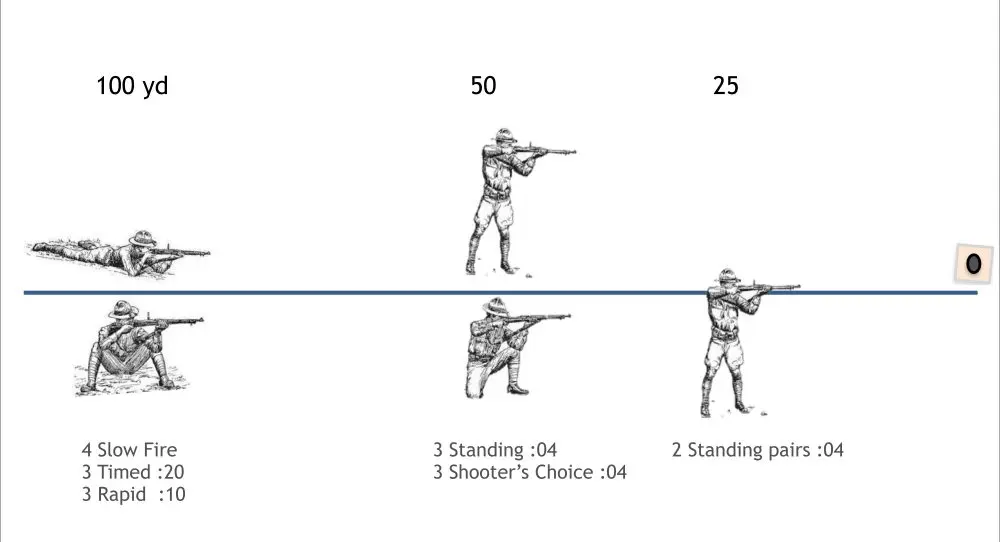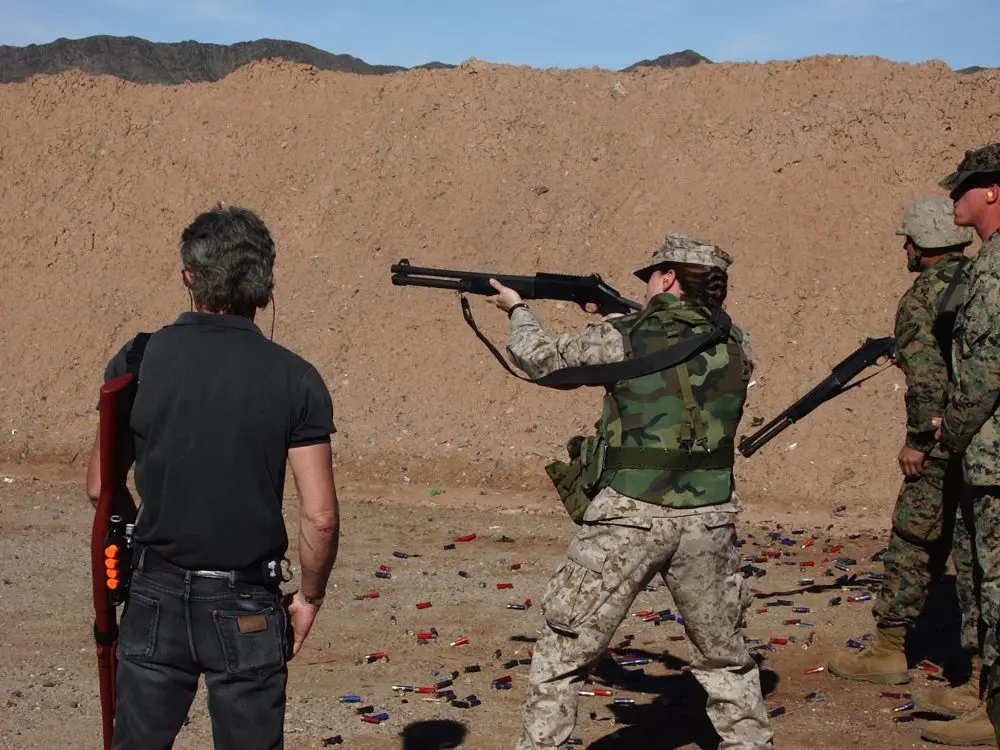An Amok Personal Combatives seminar I recently attended was such an experience.
The more I train with firearms, the more I realize that knife and open-hand skills make up equal components of personal defense skills. In many ways, proficiency with a knife and your hands can be considered even more viable than relying solely on firearms, as they provide options when different situations arise.
Not every defensive encounter warrants a firearm. More importantly, a firearm may not be readily available due to close distances or situational constraints—such as a non-permissible environment for firearms—you may find yourself in.
A brief bio blast from various sources is in order here to solidify credibility for readers not familiar with either Tom Sotis or Amok Personal Combatives.

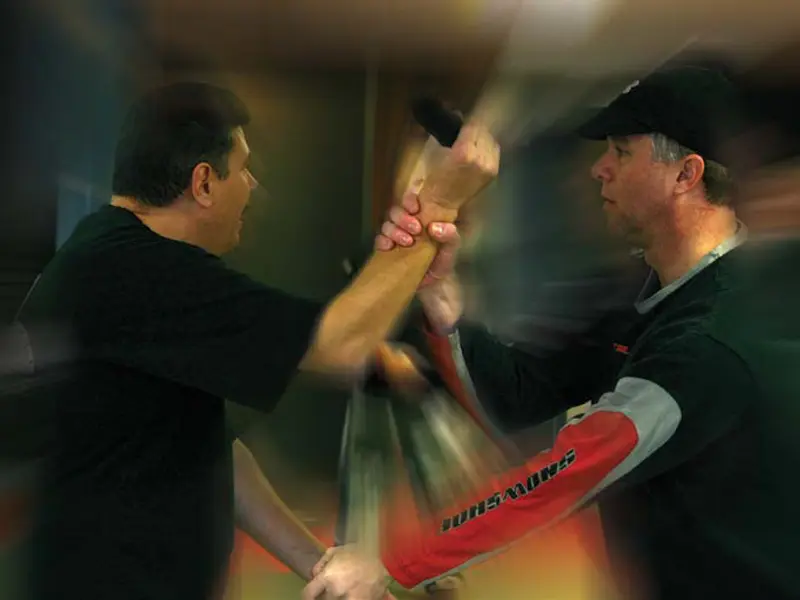

Table of Contents
AMOK PERSONAL COMBATIVES
“Tom Sotis, founder of AMOK!, has taught over 600 seminars in 30 countries, more than any other edged weapons expert in the world. He is widely regarded as the world’s most influential knifer, and his proven reputation and method of combat, aptly called AMOK!, have earned him global respect. Sotis began formal martial arts training in 1969 and by 1978 was mainly focused on kickboxing. He eventually became the 1980 WPKO Light Middleweight Kickboxing Champion.
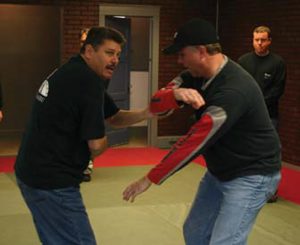
“In 1981, living in Los Angeles, Sotis began studying Kali while working security. He also gained insightful experience street fighting on a daily basis while working in Los Angeles as a criminal investigator, bounty hunter and executive protection agent. After more than 100 encounters, the reality of edged weapons convinced him to research both blunt- and edged-weapon methodologies. This experience taught him that ‘Weapons are the way of survival and that the blade rules.’ ”
In 1992 Sotis officially founded the International Blade Fighters Guild, a research group of combatants dedicated to knife fighting as their primary area of research and practice. The guild’s aim is to help responsible citizens and law enforcement agencies address the evergrowing blade element in society. After returning to New England and while pursuing martial arts, he continued with law enforcement activities for another 15 years.
Amok Personal Combatives training “aims to deliver a single set of bladebased actions to fight with, and against, every handheld weapon. Amok beliefs of knife and empty-hand techniques forge the most complete framework of possible interactions between two people. Consequently, the knife is the ideal and logical starting point for combatives training because if you learn knife tactics first, every other weapon becomes a simple matter of handling skills.”
Unfortunately, people put too much reliance on gun-only training, not realizing that for citizens and the majority of LE, attacks will happen at a distance where access to a firearm is problematic, and blind faith in its omnipotence will be detrimental.
Amok realizes that most people have neither the time nor the means to dedicate years to perfecting methods with daily or even weekly training sessions. A weekend seminar will by no means make you an expert, but a weekend with Tom Sotis will put you on a path to developing base skills that will improve your chance of prevailing when violently attacked.

LET THE INSTRUCTION BEGIN
Tom’s instruction commenced with the most obvious and pressing problem defenders find when coming under attack— accessing one’s weapon while fending off an attacker’s initial rush. The attack must be managed emptyhanded until escape or the chance to introduce a weapon is offered without sustaining undue damage in the effort. The ability to successfully access one’s weapon after weathering the initial attack transforms the fight into another of Amok’s realms—the duel. Amok cites over 200 incidents where its students successfully defeated an attack via accessing and then prevailing in the ensuing duel.
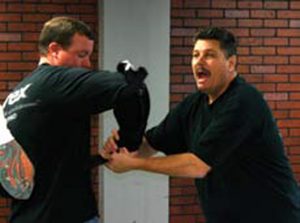
Amok separates itself from traditional martial arts and mixed martial arts in the way it prioritizes and employs training, practice and opposition (sparring/ scenarios). Amok emphasizes opposition/ sparring/scenarios so as to produce results that dictate correct practice and training.
Think of this as similar to the way force-on-force training has changed the way gun-based training is conducted, with more emphasis placed on moving off the X when attacked versus strictly adopting a stand-and-deliver defense. Force-on-force training with Simunitions or Airsoft weapons allows for more realistic scenarios with better ability to tweak training and practice methods. This is what the Amok opposition/sparring sessions provide for the knife student.
SPARRING
After introductions, Tom had the class pair off and begin access training consisting of one partner attacking the other as they parried and blocked until distance/time could be obtained to present their own weapon. Training then proceeded into dueling, with each other’s weapons presented.
I quickly realized the importance of physical conditioning—as cardiovascular weakness left me gasping for air as effort was expended trying to get into my opponent’s kill zone.
Tom introduced trapping methods along with struggles/clinches as he moved the class through Amok’s seven predicaments. This was all done prior to introducing training drills or techniques showing the system’s unique approach to increasing skill level quickly, via spiraling versus linear training methods. Empty hand and groundwork realms finished the Amok realm approach.
Groundwork consisted of taking turns in both the guard and mounted positions. Cardiovascular health, or lack thereof, was really brought home during these exercises for most participants. Everyone was acutely aware of issues faced with defending against a knife attack in all of the above realms. Tom had everyone’s attention as he described the Amok way of taking deficiencies/ weaknesses exposed in sparring and then turning to training and practice to address these weaknesses before returning to prove results in more sparring phases.

THEORY
Sotis explained the “why” of knife carry and proficiency in lieu of relying solely on a handgun:
“Further advantages confirming the practical logic of the knife include that it is practical to carry at all times, it is legal if chosen accordingly, you can carry several knives with ease, they are easy to obtain, and a pointed pen or similar improvised instrument can be held in plain view anywhere. Compared to guns, using a knife requires substantially less fine motor skills to employ effectively under stress. It is much more difficult to disarm, it defeats soft body armor, there is no risk of shoot-through or accidental discharges, and it never runs out of ammo.
“Another significant advantage is that knives are much more versatile in allowing escalation of force. In close range, a bullet travels at one consistent high speed, and it is quite difficult to shoot someone ‘just a little’ compared with a trained knifer’s ability to largely determine the force of a knife strike against its available targets. Also, a gun is often a handicap if you are forced to defend yourself in any situation where bystanders make it impossible to fire a handgun, yet the blade remains ever vigilant protecting you.
“After analyzing the facts of knives vs. guns without buying into outdated clichés, we find that every weapon has its advantages, and for most persons, the knife unquestionably exceeds all others, including guns, for practical, versatile, and effective selfprotection in virtually every situation.”
TRAINING KNIVES
Tom pushed everyone in the Personal Combatives seminar to not only train hard, but also to train smart. An example of this is the type of training knives that Tom not only recommends, but also provides to his students—Nok Hard Contact Training Knives. Handmade one at a time, these knives have a hard core so they won’t flop in your hands during paired drills or disarms. They have the stopping power you want when sparring. The training knives have a slim profile like a live blade, with a firm handle and a double padded butt end for striking and in-close work.
Sotis stresses there is a place for aluminum training knives and even live blades as skill level and proficiency increase.
After the initial free-form sparring matches, Tom began introducing specific blocks, grabs, parries, and other methods to help students develop better responses to accessing and dueling realms. He was a dynamic speaker with plenty of anecdotes to assist him in making points about what he was demonstrating or talking about. He strived to deliver a ‘’hands-on’’ edged-weapons training tailored to street survival. Every new method he spoke to and demonstrated was contextually briefed so that students understood exactly why we were doing it.
MINDSET
Sotis did not sugarcoat the brutality of knife fighting and open-hand combative techniques. The physiological aspects of edged-weapon and emptyhand confrontations were stressed as opposed to worrying about what technique would work best in a given situation.
A warrior mindset was the most crucial component emphasized. Tom wanted every student to be clear on the Amok style and methods for attacks and counters. Students were encouraged to embrace the chaos typical of hand-tohand combat in such a way as to be able to prevail and react versus freezing up or fumbling mentally while attempting to access the correct form for an offside backhand. Amok trains for instantaneous response with violence of action exceeding the initial onslaught.
Tom summed up the why of Amok:
“Examined through logic and reasoning, no method of self-preservation compares to the blade. In terms of one’s time, effort, and money invested in self-protection, the choice is training years in a martial art for the narrow advantages it produces, compared with weeks of knife training which offer instant and effective self-protection (while empty-hand skills develop). The knife’s advantages are so significant over empty-hand methods, it’s not fair to even compare them.”
